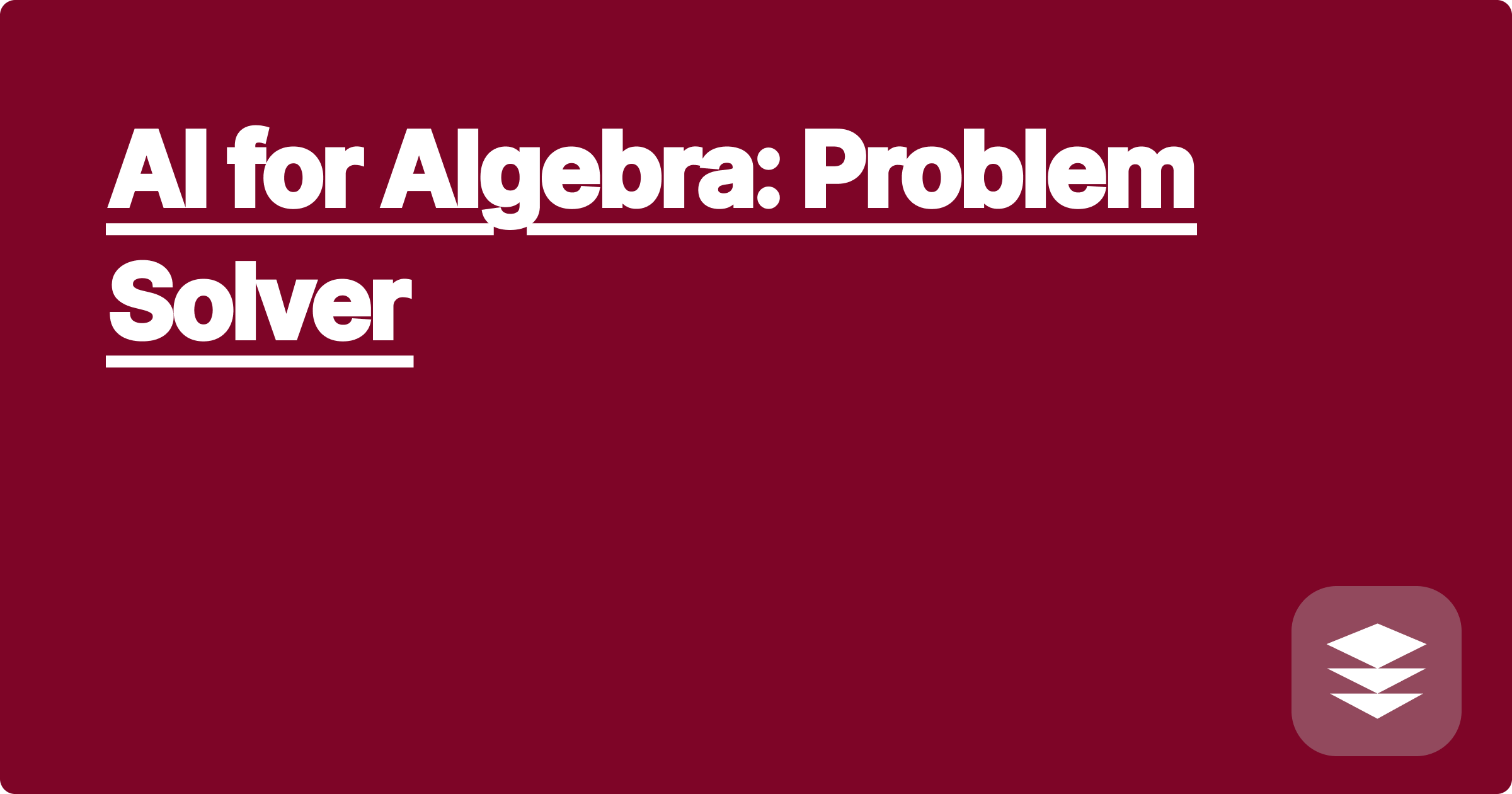
Algebra, a cornerstone of STEM education and research, often presents a significant hurdle for students and even seasoned researchers. The complexity of symbolic manipulation, equation solving, and abstract concepts can be daunting. Fortunately, the rise of artificial intelligence offers powerful new tools to tackle these challenges, transforming how we approach and understand algebra. AI-powered solvers can not only provide solutions but also offer step-by-step explanations, fostering deeper comprehension and accelerating the learning process.
This emerging field of AI-driven algebraic problem solving has profound implications for STEM students and researchers. For students, it can provide personalized support, helping them overcome difficult concepts and build confidence. For researchers, these tools can automate tedious algebraic manipulations, freeing up valuable time for more complex and creative endeavors. Ultimately, AI has the potential to democratize access to advanced mathematical tools and empower a new generation of STEM innovators.
Algebra encompasses a vast domain, ranging from basic equation solving to abstract algebraic structures. A common challenge for students is manipulating complex expressions, factoring polynomials, and solving systems of equations. These tasks often require a deep understanding of underlying principles and a significant amount of practice. Furthermore, the abstract nature of algebraic concepts can make it difficult for students to visualize and grasp the underlying relationships between variables and equations. Researchers also face algebraic challenges, often needing to perform complex symbolic computations in fields like physics, engineering, and computer science. These computations can be time-consuming and error-prone, hindering progress and potentially leading to inaccurate results.
AI tools like ChatGPT, Claude, and Wolfram Alpha offer innovative solutions to these algebraic challenges. These platforms leverage the power of natural language processing and symbolic computation to provide step-by-step solutions and explanations. Users can simply input an algebraic problem in natural language or using standard mathematical notation, and the AI will process the input, identify the relevant concepts, and generate a solution. Moreover, these tools can often explain the reasoning behind each step, providing valuable insights into the underlying mathematical principles. Wolfram Alpha, in particular, excels at handling complex symbolic computations and visualizations, making it a powerful tool for both students and researchers.
Using these AI tools is remarkably straightforward. First, clearly define the algebraic problem you want to solve. This might involve writing an equation, describing a word problem, or specifying a system of equations. Next, choose an appropriate AI tool based on the complexity of the problem. For simple equation solving or explanations of basic concepts, ChatGPT or Claude might suffice. For more advanced symbolic computations or visualizations, Wolfram Alpha is often the better choice. Then, input the problem into the chosen tool, ensuring that you use correct mathematical notation or clear natural language. The AI will then process the input and generate a solution, often accompanied by step-by-step explanations. Finally, carefully review the solution and explanation provided by the AI. Ensure that the solution makes sense in the context of the problem and that you understand the reasoning behind each step.
Consider the problem of solving the quadratic equation x² - 5x + 6 = 0. Inputting this equation into Wolfram Alpha will not only provide the solutions x = 2 and x = 3 but also display the steps involved in using the quadratic formula or factoring. Another example is simplifying the expression (x + 2)(x - 3). AI tools can expand this expression to x² - x - 6, showing the distributive property in action. For more complex scenarios, like solving a system of linear equations such as 2x + y = 5 and x - y = 1, these tools can provide the solution x = 2 and y = 1, along with the steps involved in using methods like substitution or elimination. These examples demonstrate the versatility and power of AI in handling various algebraic problems.
To maximize the benefits of AI in STEM education and research, it's crucial to use these tools strategically. Don't rely solely on AI to solve problems without understanding the underlying concepts. Instead, use these tools as a supplement to your learning and as a means of checking your work. Actively engage with the explanations provided by the AI, seeking to understand the reasoning behind each step. Furthermore, explore the different features offered by various AI tools, such as visualizations and interactive examples, to deepen your understanding. By integrating AI thoughtfully into your workflow, you can enhance your learning experience and unlock new levels of academic achievement.
In conclusion, AI-powered algebra solvers represent a powerful new paradigm in STEM education and research. These tools offer accessible and efficient solutions to complex algebraic problems, empowering students and researchers alike. By understanding the capabilities and limitations of these tools and using them strategically, we can harness the power of AI to unlock new levels of understanding and accelerate progress in STEM fields. Explore these tools, experiment with different problem types, and discover how AI can transform your approach to algebra and beyond. Embrace the potential of AI to become a more effective learner and a more productive researcher.
Physics Help: AI Problem Solver
Engineering AI: Design Optimization
STEM Success: AI Learning Tools
Data Science AI: Analysis Boost